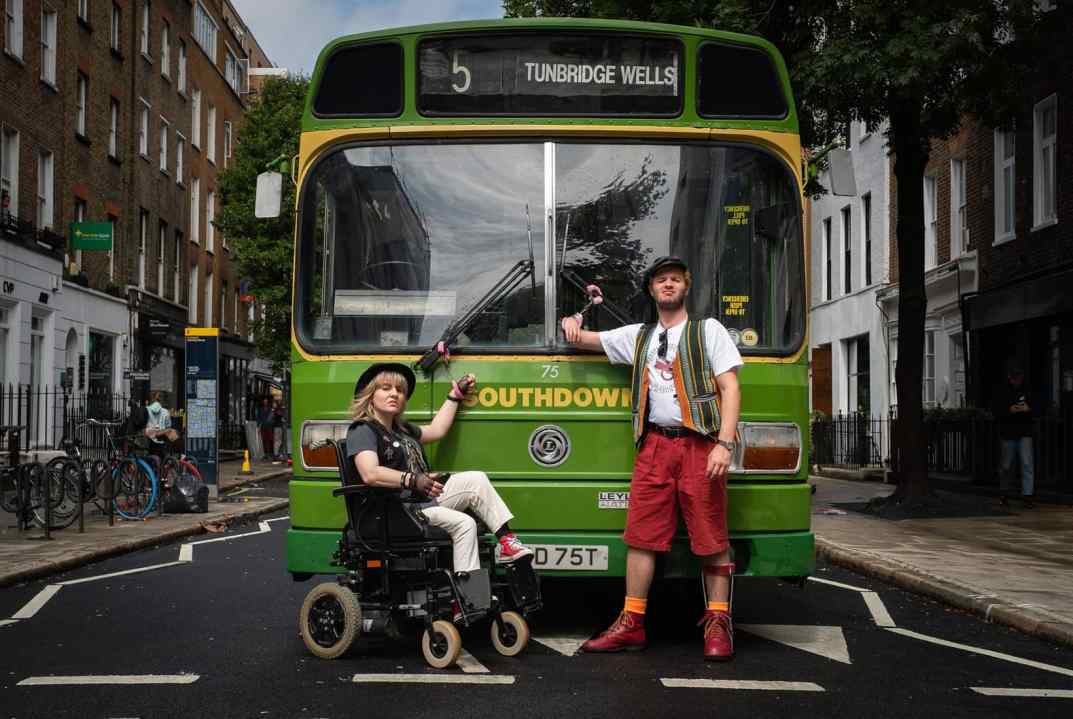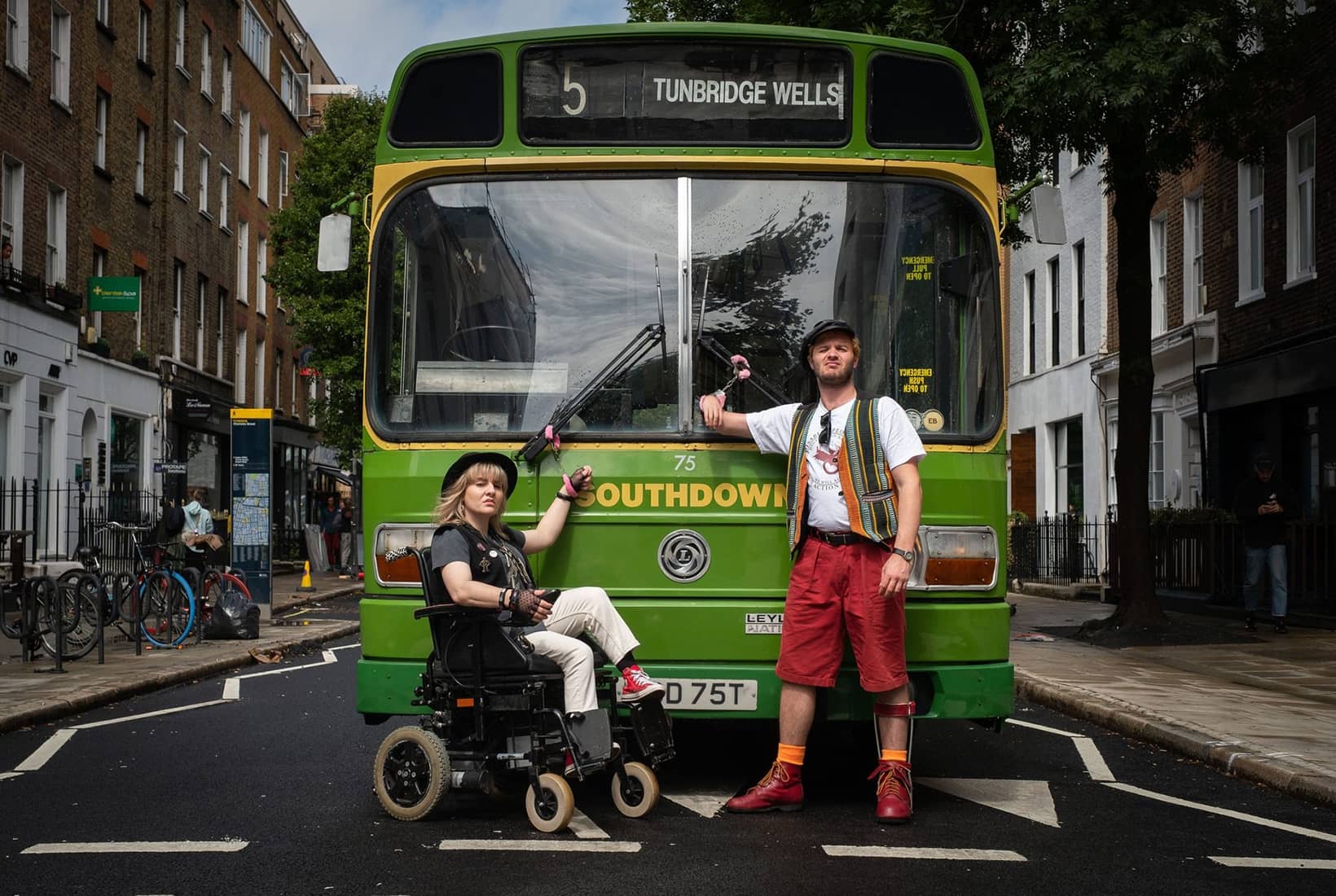BBC2’s one-off drama Then Barbara Met Alan (Monday) told the true story of how two disabled performers on the cabaret circuit of the 1990s fell in love and campaigned together successfully for disability rights. Most of the cast and a lot of the crew were people with disabilities themselves, and the programme provided a startling reminder of how recently Britain was still a country that made little provision for the disabled – and, even more startlingly, of how controversial the idea of such provision then seemed. The central performances were rivetingly good, and the overall sense was of a heartfelt tribute being paid to a couple who did much to improve the lives of many thousands of people. In other words, this was the sort of show that it feels very awkward to question, let alone criticise – but (nervous gulp!) here goes anyway.
The most obvious flaw was that it never solved the traditional problems that come with writing agitprop: among them, relentlessness, lack of nuance and how to make the audience not feel they’re constantly being shouted at.
In the opening scene, wheelchair-user Barbara Lisicki (Ruth Madeley) was in a bus shelter where she painted the words ‘Piss on Pity’ in large letters. Which, as it turned out, was an appropriate start – because painting the words ‘Piss on Pity’ in large letters was pretty much what the script did for the next 70 minutes.
The telethon was ‘pure show-us-your stumps voyeurism, a parade of begging, drooling cripples’
In particular need of pissing on at the time, according to Barbara and her new boyfriend Alan Holdsworth (Arthur Hughes), was the ITV telethon for the disabled, as presented by the man put forward on Monday as a rather unlikely arch-villain: Michael Aspel. To some, the telethon may have seemed a well-meaning attempt to raise money. To the couple, and therefore to the programme, it was ‘pure show-us-your stumps voyeurism, a parade of begging, drooling cripples’.
Well, maybe it was. But, given the approach here, we had no way of knowing. A useful – if not widely observed – rule of political drama is to give the best lines to your opponents. This one, though, didn’t just fail to do that. Instead, it gave them no lines at all. (Oddly, too, it made no reference to the real-life Barbara’s equally passionate protests against the BBC’s Children in Need.)
Still, one large demo later, the telethon had been banished. Better still, Barbara and Alan now had what she told us excitedly was a ‘network of disabled people who believed in the power of collective action’. Called, understandably, the Direct Action Network (DAN), it campaigned next for a disability rights act, which led to the drama’s first – and, as it transpired, only – glimmer of light and shade.
Alan, you see, believed that working with politicians and disability charities would be a hideous sell-out. (And if their representatives were all as grotesquely patronising as portrayed here, he may have had a point.) Much better, and certainly more fun, was for DAN’s members to keep chaining themselves to railings and blocking London traffic. Barbara, by contrast, found herself unexpectedly stressing the need for compromise. Seeing as the government had finally agreed to pass the new law anyway, why have another disruptive demo about their failure to do so?
For a while, in fact, it looked as if Monday’s drama might genuinely tackle the interesting question of whether some activists would prefer to carry on protesting rather than to win their cause. Confusingly, however, this debate suddenly disappeared – when, without further explanation, Barbara joined in enthusiastically with the demo she’d seemed to argue against.
The main attempt the programme made to escape from pure agitprop was Barbara and Alan’s romance – but the trouble was that it didn’t have enough time amid the sloganeering to tell it properly. As a result, what we got felt more like notes towards their love story than the thing itself.
The show’s final scene was undeniably stirring as a mixture of the cast and the real-life characters they played gathered on a bus to celebrate with infectious joy everything they’d achieved (including the ramps that allowed them to gather on a bus). Unfortunately this only made me feel even more guilty for finding what had preceded it such a grind.
All in all, Then Barbara Met Alan could have done with a hefty dollop of the kind of irreverence on display in Peacemaker (Sky Max). I must confess that my knowledge of the DC extended universe of superheroes is somewhat limited. So maybe the show’s winning ability to simultaneously respect the conventions of its own genre and to send them up something rotten is not as unusual these days as it seemed. (Adam West’s Batman, of course, did a similar thing – if with less swearing, sex and hair-raising violence.) Either way, though, Tuesday’s opening episode was huge, irresistibly silly fun.







Comments